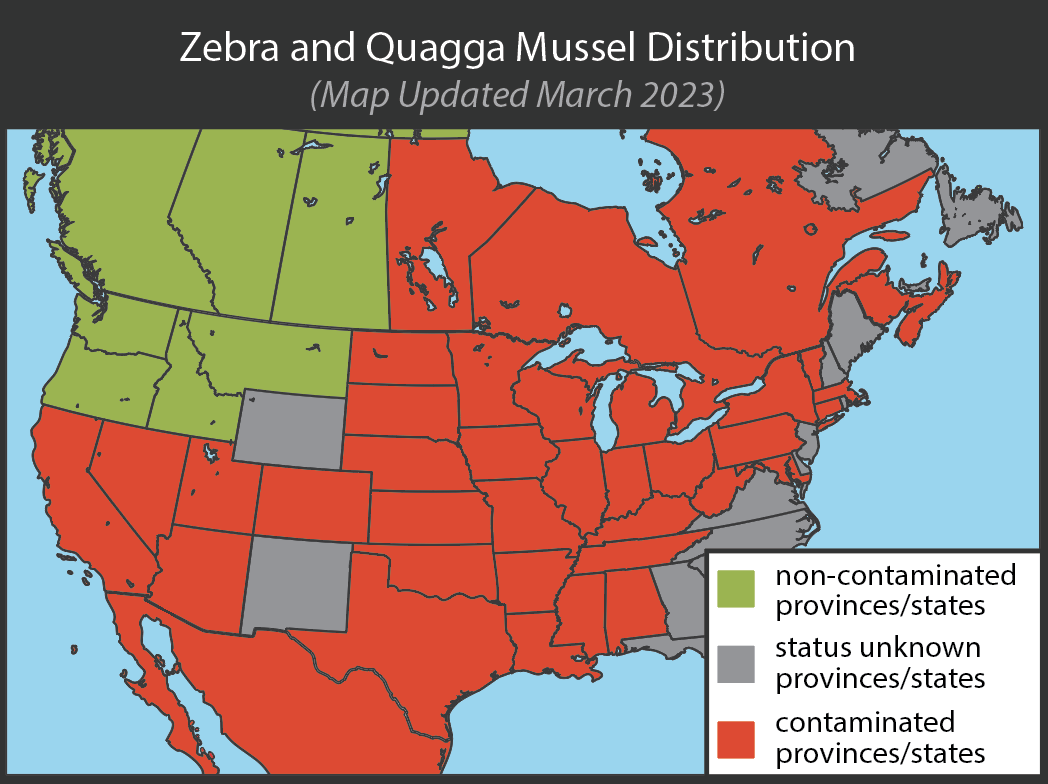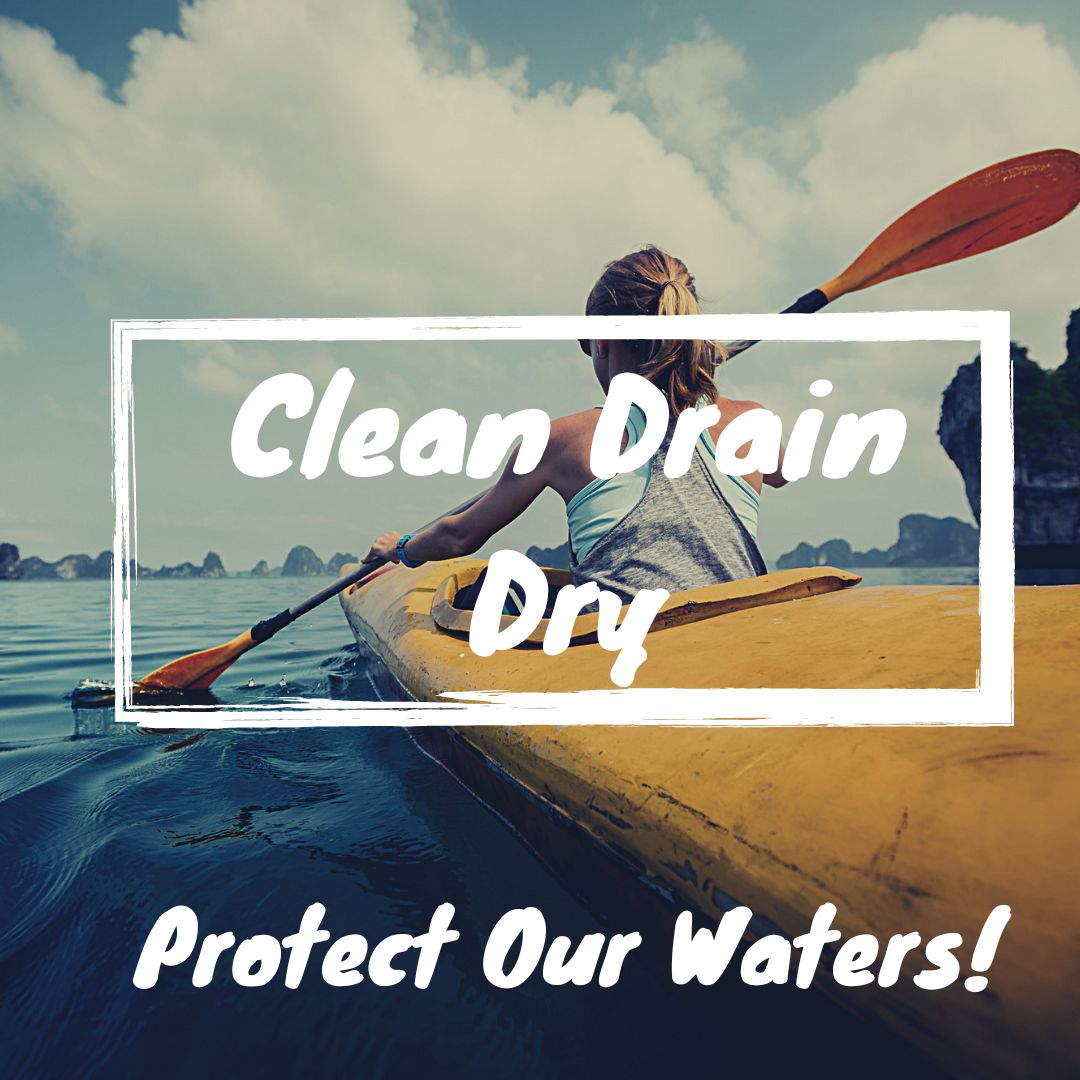As summer kicks off, so does the boating season. Whether you’re gliding across the lake in a kayak, fishing from your motorboat, or paddleboarding with friends, it’s crucial to remember the Clean, Drain, Dry protocol to protect our water bodies from aquatic invasive species (AIS). This simple routine not only helps prevent the spread of harmful organisms but also keeps your watercraft in top shape.
Why Clean, Drain, Dry?
Aquatic invasive species, like zebra mussels and quagga mussels, pose significant threats to our ecosystems. These invaders can damage watercraft, disrupt local habitats, and clog water intake structures, leading to costly repairs and maintenance. By following the Clean, Drain, Dry steps, you play a vital role in preserving the health and beauty of our lakes and rivers.
Step 1: CLEAN
After an enjoyable day on the water, take the time to inspect your watercraft and all your gear for any signs of plant or animal material. Invasive hitchhikers can hide in all the nooks and crannies, so be thorough. This includes not only motorized boats but also canoes, kayaks, paddleboards, floaters, oars, lifejackets, and fishing gear. The rule of thumb is simple: if it touches water, it needs to be cleaned. Remove all mud, dirt, plants, and aquatic species to ensure nothing unwanted is transported to another water body.
Step 2: DRAIN
Drain onto dry land any item that can hold water, such as the bilge, ballast tanks, wells, and buckets. Leaving the drain plug out will help ensure that the bilge can dry completely. This step is crucial because even small amounts of water can harbor invasive species.
Step 3: DRY
Dry all items thoroughly before launching your watercraft into another body of water. Many aquatic invasive species, including the destructive zebra and quagga mussels, can survive in small amounts of water for extended periods. Ensuring everything is completely dry minimizes the risk of spreading these invaders.

Decontamination and Legal Requirements
Currently, there are no reported water bodies in B.C. contaminated with zebra or quagga mussels. However, if you have visited infested provinces or states in the last 30 days, your boat might need decontamination before re-entering B.C. waters. To avoid the unintentional transport of these species, do not attempt to clean the watercraft yourself if it has been outside B.C. recently. Instead, contact the RAPP line at 1-877-952-7277 for proper decontamination procedures. Remember, it is illegal to transport invasive species in B.C.

Thank You to Our Supporters
A special thank you to Fortis BC for supporting Clean, Drain, Dry education in our region. Their contributions help ensure that our waterways remain safe and enjoyable for everyone.
By following these simple steps, you help protect our water bodies from invasive species and contribute to the preservation of our beautiful natural environments. Let’s all do our part to keep B.C.’s lakes and rivers clean and healthy this boating season.
Stay safe, and happy boating!

